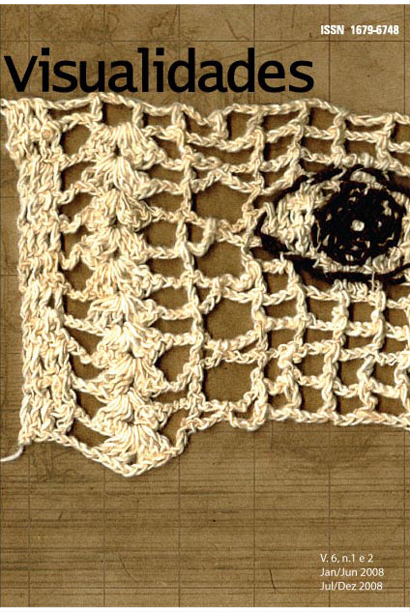A arte como recorte do real: a condição humana em Käthe Kollwitz - DOI 10.5216/vis.v6i1eI2.18070
DOI:
https://doi.org/10.5216/vis.v6i1ei2.18070Resumen
Este trabalho, fruto de uma pesquisa teórica, tem por objetivo analisar a obra da artista alemã Käthe Kollwitz sob o viés da arte engajada. As técnicas utilizadas por Kollwitz, são a água-forte, a litografia e a xilogravura e algumas incursões pela escultura. Quaisquer delas apresentam as características da clareza, dos traços simples, sem rebuscamentos. Isso respondia a seus anseios de tornar a arte mais popular, acessível àqueles que dela não poderiam fruir em outros espaços, como os museus. Respondia também à coerência daquela que acreditava que a arte deveria “ser um acontecimento entre o artista e as pessoas”. Inserida na dinâmica da vida social, seu comprometimento com a causa operária afina-se com a arte no emaranhado da vida cotidiana dos operários, mesclada pela dor, o sofrimento, a violência e a privação. A recusa da beleza da arte convencional explicita o vigor de Kollwitz em contestar a contrastante desigualdade social, especificamente na Alemanha. Sem jamais ter registrado sua vinculação a um partido político, sua preocupação com a condição humana era evidente e suscita ainda hoje em nós, o questionamento acerca dos rumos da arte na contemporaneidade.
Palavras-chave: Käthe Kollwitz, condição humana, arte social
Descargas
Descargas
Publicado
Cómo citar
Número
Sección
Licencia

Esta obra está licenciada bajo una Creative Commons Attribution 4.0 International License .
Los autores que publican en esta revista concuerdan con los siguientes términos:
a. Los autores mantienen los derechos de autor y conceden a la revista el derecho de primera publicación, con el trabajo simultáneamente licenciado bajo la Licencia Creative Commons Attribution 4.0 que permite el compartir el trabajo con reconocimiento de la autoría y publicación inicial en esta revista.
b. Los autores tienen autorización para asumir contratos adicionales por separado, para distribución no exclusiva de la versión del trabajo publicada en esta revista (por ejemplo, publicar en repositorio institucional o como capítulo de libro), con reconocimiento de autoría y publicación inicial en esta revista.
c. Los autores tienen permiso para publicar y distribuir su trabajo en línea (por ejemplo, en repositorios institucionales o en su página personal) después de la publicación inicial en esta revista, ya que esto puede generar cambios productivos, así como aumentar el impacto y la cita del trabajo publicado ( Vea el efecto del acceso libre).
Se hicieron todos los esfuerzos para identificar y acreditar a los titulares de derechos sobre las imágenes publicadas. Si tiene derechos sobre alguna de estas imágenes y no ha sido correctamente identificado, por favor, entre en contacto con la revista visuales y publicaremos la corrección en uno de los próximos números.






